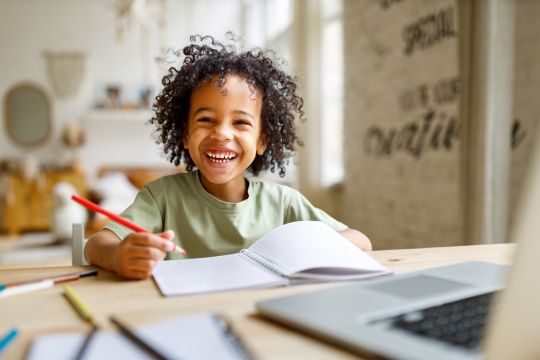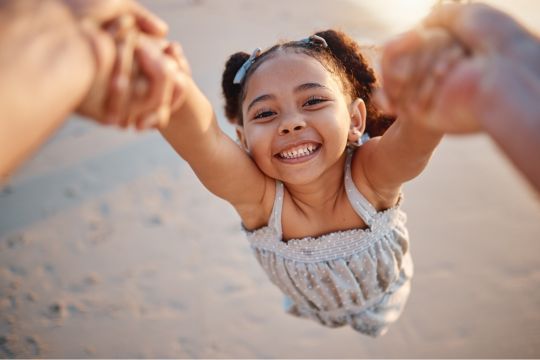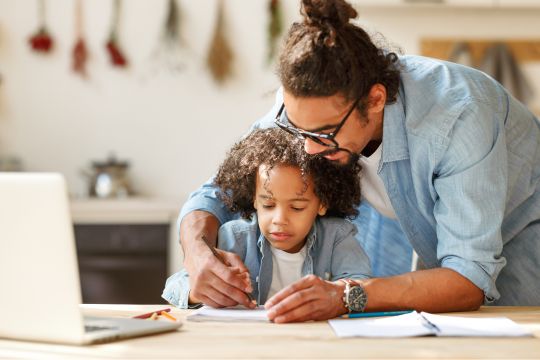Proprioception & Body Awareness
Body awareness lays the foundation for perception and movement in daily life. Part of our proprioceptive system, body awareness is the ability to recognise where our body is in space, helping us understand how to relate to everything around us. This guides us to correctly reach for objects, keep an appropriate distance when standing in line and safely move our body.
A big part of daily life, body awareness is an important skill our children need to develop to move about safely and interact appropriately with the world around them. If there is an issue with body awareness, it can result in delayed motor skills and your child appearing to be clumsy or uncoordinated.
Why we need body awareness
We rely on body awareness for motion, coordination, balance and our fine and gross motor skills. Being aware of our hands and fingertips helps us know how to hold a pencil and how hard to press down. It helps us estimate weight and distance, such as working out how much strength you’ll need to carry a box of full water bottles by just looking at the box.
We rely on body awareness constantly. It helps us stay balanced, keeps us safe, assists us to move well and guides us in interacting with objects and people in our immediate environment. Good body awareness makes daily life a whole lot easier, whether we are at home, at work or at school, while poor body awareness can make everyday life a real challenge.
What is proprioception?
Proprioception, also called depth perception, is one of the eight senses that make up our sensory system. Together with auditory, tactile, visual, olfactory, gustatory, vestibular and interoceptive perception, proprioception is often seen as the sixth sense, guiding us in how we move about in daily life.
Body awareness is a key part of our proprioceptive system, providing us with information about:
- the position of our body - for instance, where our legs and arms are at any given time;
- the distance to objects - helping us to estimate how far they are away from us;
- the weight of an object - to help us estimate how heavy it will be; and
- how much power we need to carry or move an object.
To develop good body awareness, we need to ensure we receive appropriate proprioceptive feedback. To help us, proprioceptive receptors are located in muscles, ligaments and tendons all over our body, giving permanent sensory input to our brain.
Now, if your child has an over or under responsive proprioceptive system, it’s important to work on these receptors to help balance their sensory needs and give them the proprioceptive feedback they crave.
Signs of poor body awareness
Occasionally, children and adults have reduced or not so well-developed body awareness skills, which can be a sign of Sensory Processing Disorder (SPD). Signs of poor body awareness may include:
- Clumsiness (unintentional running into doors, walls or other objects)
- Restricted balance
- Rough body contact with other people (intensive hugs, unintentional hurting of other children/people)
- Difficulty carrying objects or objects often being dropped
- Uncoordinated movement
- Weird sitting or lying position
- Strange gait pattern
Poor body awareness can be improved with the help of a Occupational Therapist. A program can be developed to work on the proprioceptive system and train the body to recognise signals from the joints and muscles. OTs can also suggest strategies to help children and adults learn to maximise their body awareness skills and cope better in everyday life.
Improving body awareness
The best way to improve body awareness is to incorporate training into daily life, by practicing daily life skills or introducing games and activities for children.
Daily life skills
- Put clothes on and off
- Baking and cooking
- Watering flowers
- All kind of sports
- Running, jumping and walking in general
- Carrying and moving objects
Games and activities for children
- Play dough
- Lego, building stones
- Throwing and catching a ball
- Progressive muscle relaxation
- Yoga for kids
- Animal imitation (crawl like a bear, jump like a kangaroo etc.)
- Jumping on a trampoline
- Body picture (draw around your child’s body on a big sheet and paint it later together with your child, including eyes, nose, mouth, clothes and so on)
- Play a game where you estimate the size and weight of an object
- Pillow fight
- Roll on the ground
- Gymnastics
- Fine and gross motor games
- Movement parkours (with open and closed eyes)
- Play a game like Simon Says or do the Hokey Pokey to practice moving different body parts (“put your left leg in, put your left leg out…”)
- Create a backyard obstacle course to go over, under and through obstacles



